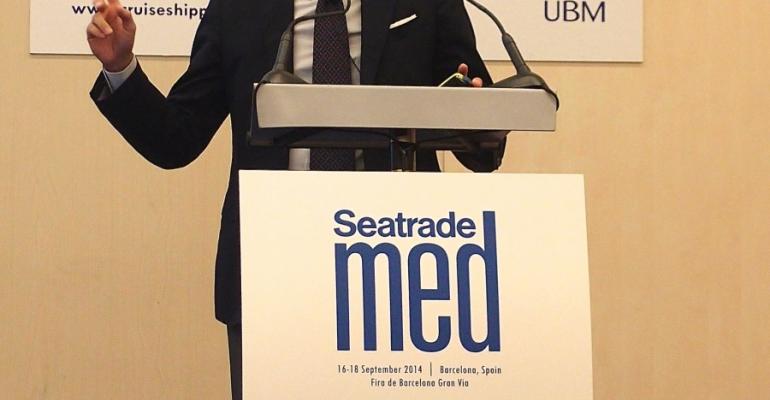These were key topics of an expert panel on logistics and ship supply at Seatrade Med in Barcelona.
Price, quality, service and innovation are critical, the panelists said.
It's important to know the total cost of delivery, stressed John Paul Brigneti, vp global logistics, cruise and marine solution, Savino Del Bene USA. Sometimes logistics can amount to 20% to 40% of the product's cost, he said.
Supplying the cruise business is very challenging and barriers to entry for new suppliers are high, Brigneti added. Regulatory and customs issues are complicated and vary from place to place. For example, in the US, a company may be able to get money back if duty is paid on duty-free items that are exported by ship. However, a harbor maintenance fee may be levied on goods, even if they're in bond, which could add $3,000 to the price of a single container.
Planning to supply a ship begins six or seven months in advance. It may take 40 or 50 days for a container to go from Miami to Singapore, and once it arrives, Brigneti said, the most complicated part of the process begins: customs and storage.
Total cost is absolutely critical, agreed Giorgio Zagami, corporate procurement and logistics manager, MSC Cruises. The growth of the cruise industry gives the opportunity to experiment, he added. For example, MSC is supplying ships based seasonally in Brazil and Argentina, so some local items are sourced in addition to MSC's core Mediterranean products.
In retail shops on board, brands can connect directly with consumers, and there are opportunities for suppliers to partner with a cruise line's network, Zagami said.
In the Port of Barcelona, the public and private sectors worked hand in hand to forge a logistics supply chain to facilitate the handling of spare parts, dry and refrigerated goods and warehousing, noted Tulio Giudice, board member of Transcoma Global Logistics.
There's a great variation in how companies do business. Giudice said one may prefer to warehouse goods in Hamburg and deliver them to ships in the Mediterranean, while another may do the opposite.
Responding to an audience member's concern about the cost of stevedores in the Port of Barcelona, Giudice said this is a problem Transcoma is working on. In a study of 20 containers, he found stevedore costs were €4,000 to €6,000 in Civitavecchia and as much as €17,000 in Barcelona.
In the next few years, Brigneti told the session, Asia is going to become major for the cruise industry, and lines must prepare in advance to supply ships in the region.
How that's done will depend on the source markets for the ships, Giudice noted, because needs will vary for vessels carrying Asians or Americans.
Technology plays an increasing role in ship supply and logistics. For example, Brigneti said Savino Del Bene is developing a device that can be placed inside a box to track its temperature and indicate if the box has been opened.
And while cruising is an increasingly global business, there's also a trend on the part of some lines to feature regional dishes and local products, which means a shift back to using local chandlers, noted session moderator Grenville Cartledge, md of Four Gold Ltd.
'When we ask our customers, they say local products are very important,' Zagami confirmed. Local purchasing impacts the supply chain, and some cruise lines are more local while others are more centralized, he said.
Reducing packaging is becoming a focus of sustainable operations. Today's customers expect companies to do right by the environment, and lines are continuously reviewing packaging to see how they can cut waste and costs, the panelists said.
Copyright © 2024. All rights reserved. Seatrade, a trading name of Informa Markets (UK) Limited. Add Seatrade Cruise News to your Google News feed.


